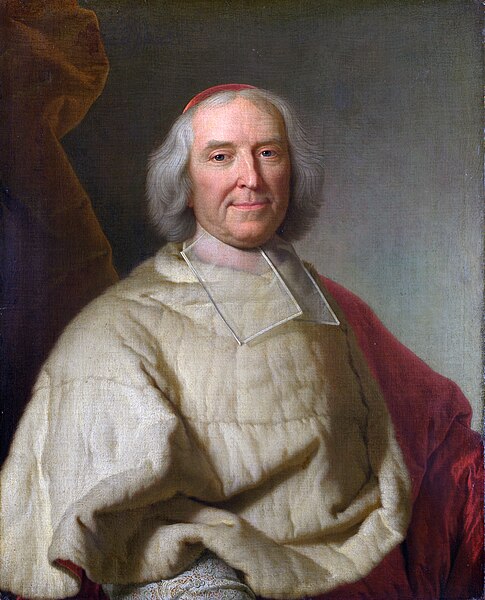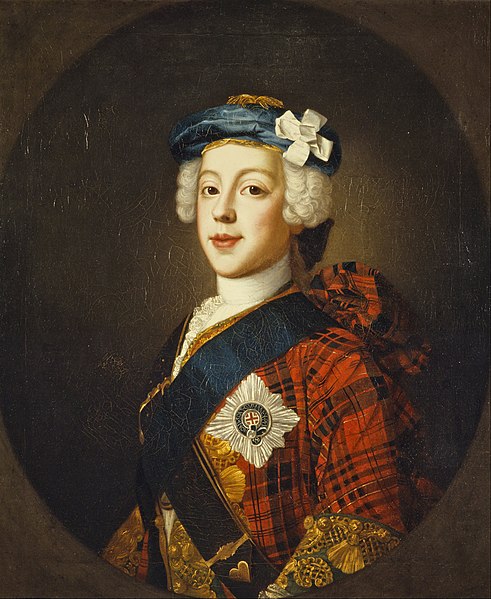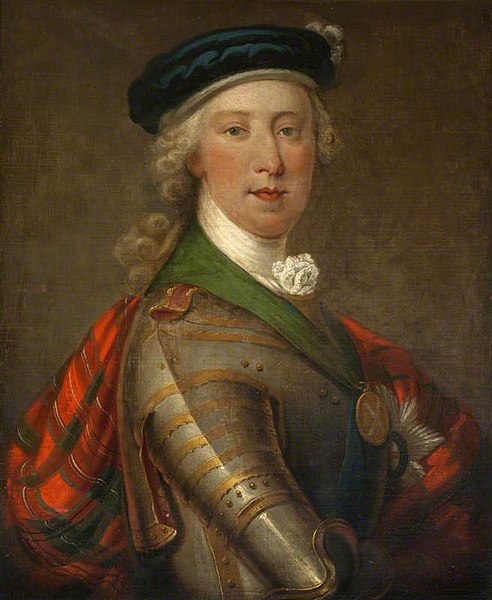The Jacobite rising of 1745 was an attempt by Charles Edward Stuart to regain the British throne for his father, James Francis Edward Stuart. It took place during the War of the Austrian Succession, when the bulk of the British Army was fighting in mainland Europe, and proved to be the last in a series of revolts that began in March 1689, with major outbreaks in 1715 and 1719.
An Incident in the Rebellion of 1745, David Morier
James Francis Edward Stuart, the 'Old Pretender,' or 'Chevalier de St George' portrait from 1748
Cardinal Fleury, chief minister of France 1723 to 1743; he viewed the Jacobites as an ineffective weapon for dealing with British power
Welsh Tory Sir Watkin Williams-Wynn (1692–1749); his sky-blue waistcoat was a Jacobite symbol
Charles Edward Louis John Sylvester Maria Casimir Stuart was the elder son of James Francis Edward Stuart making him the grandson of James VII and II, and the Stuart claimant to the thrones of England, Scotland, and Ireland from 1766 as Charles III. During his lifetime, he was also known as "the Young Pretender" and "the Young Chevalier"; in popular memory, he is known as Bonnie Prince Charlie.
Charles Edward Stuart by Allan Ramsay, painted at Holyrood Palace, late autumn 1745
Portrait by William Mosman
Charles Edward as the Jacobite leader (a painting in Traquair House, attributed to the circle of Louis Tocqué)
A 1907 illustration of Prince Charles seen on the battlefield








